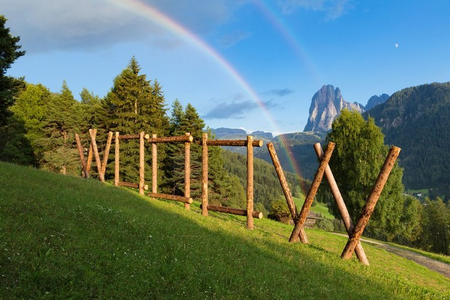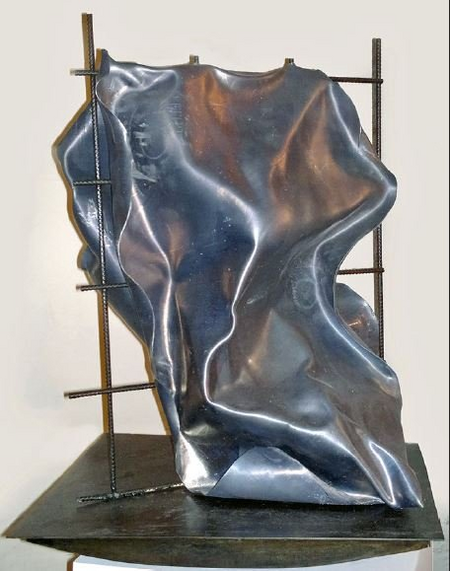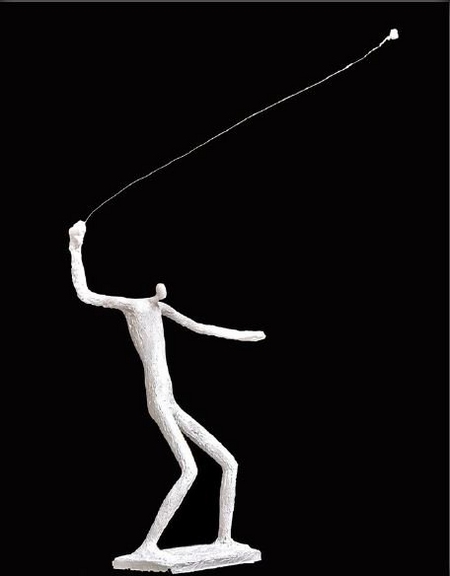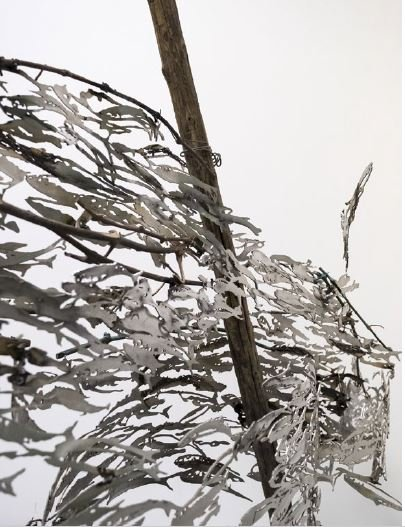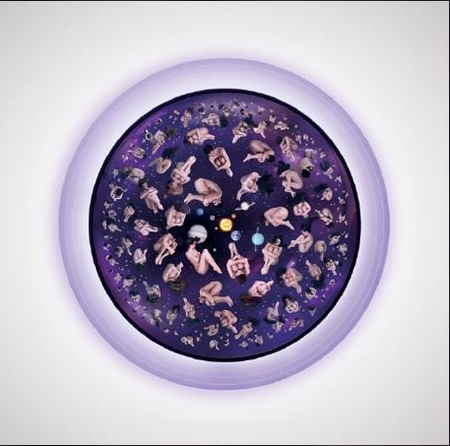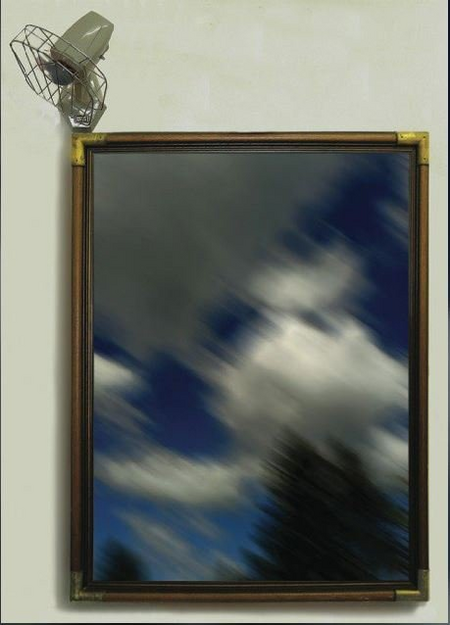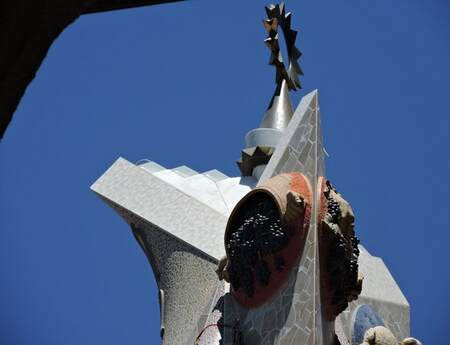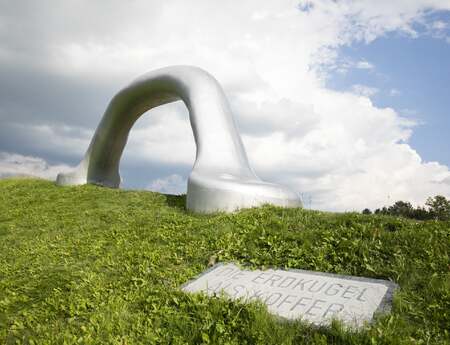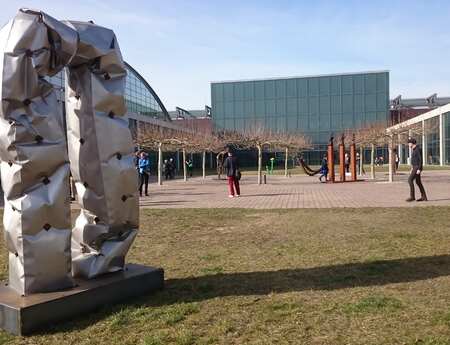A Journey through the Italian Sculpture: an Interview with the Curator Valerio Dehò
We continue our in-depth study of Milano Scultura and the Italian sculpture scene with an interview with Valerio Dehò, curator and creator of Milano Scultura.
***Per la versione italiana scorrere verso il basso.***
Valerio Dehò is Professor of Aesthetics at the Academy of Bologna. During his career he has taught at the academies in Ravenna, Rimini, Sassari and Carrara. He was Commissioner of the Rome Quadrennial in 2005 and Artistic Director at the Merano Arte from 2001 to 2015. In addition he is a journalist for numerous Italian and international magazines and curator of exhibitions in Italy and Europe. He created the sculpture fair Milano Scultura, now in its fourth edition.
Nicola Valentini: sculpture network’s mission is to create a platform to connect sculptors and sculpture enthusiasts in Europe and around the world. It’s not everyday that you will find an organization that is willing to take the risk of investing in this niche, after all sculpture is a small universe with certain special characteristics and is uniquely complex.
Valerio Dehò: Sculpture is very popular, but the market in Italy has suffered greatly from the lack of large public commissions, while in Germany and France there is still great demand from the municipalities and provinces.
With Milano Scultura the idea was to transform a generic fair, Step Art Fair, into a specialized fair to differentiate it from the multitude of fairs that are appearing with increasing frequency. With sculpture we obviously also mean installations, remembering that sculpture has connections with architecture and design. This ability to connect science and very different languages makes today's sculpture so very interesting.
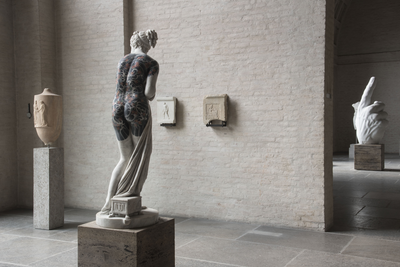
In your opinion where are the most important locations in Italy for enthusiasts, collectors and artists looking for comparable works and further inspiration?
First of all, I want to mention that we have important sculpture parks, but artists tend to concentrate their studios where the raw materials abound, where the laboratories are. Every sculptor needs a workshop. Of course, there are exceptions: there is a very young Italian sculptor called Fabio Viale who studied in Carrara. I contacted him ten years ago because he was the only one who seemed to be able to put different things together, thus managing to do something new in marble sculpture, which is the most traditional medium. He had the idea of integrating tattoos into art: it may sound trivial, but it means bringing together popular culture and noble art. Viale works in Turin, far away from the traditional sculpture locations: he had the marble blocks brought from Carrara to the north, he's a good example.
Let’s continue talking about locations for sculpture, you worked in South Tyrol for a long time.
I curated Tony Cragg's exhibition in 2011 in Merano [editors note: together with John Wood and Silvio Fuso], after it had been inaugurated in Ca Pesaro the previous year. I have to say, unfortunately, that the South Tyroleans missed an opportunity. We had the chance to purchase his works for a ridiculously small sum: 80,000 euros for a sculpture that cost 40,000 for just the fusion. The South Tyroleans, however, are very conservative, that’s part of their culture and they declined the offer.
The transition from craftsman to artist was a revolutionary turning point for all these artists such as Demetz or Senoner in South Tyrol. I can say with pride that I helped them. You cannot imagine how much animosity towards and closure against the Ladins and their wood carvings there was. They were not considered artists, just creators of religious sculptures. But a generation of interesting artists was born: Ulrich Egger and Walter Moroder are the oldest [editors note: born in 1959 and 1963, respectively].
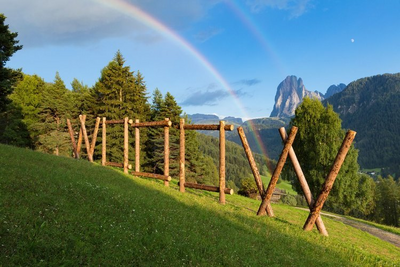
Then there are the ones born around 1970, including Demetz. They all went to school in St. Ulrich [German name for Ortisei, also known as Urtijëi in Ladin]. There is only one art school in this area and people come from northwest Italy to learn wood carving there. There is no academy in the whole of Trentino-Alto Adige. Aspiring artists go to Munich, Vienna or other Italian academies such as Bologna or Florence, which continue to exert a strong fascination for sculptors due to their classical tradition. In South Tyrol there is also only one gallery, but they never came to Milano Scultura, the Doris Ghetta Gallery which organizes many important exhibitions including the Biennale Gherdëina.
I'm surprised that so few areas in Italy are represented at the Milano Scultura. It's a pity to think that you can't represent the whole country.
Networking is not easy and the logistics pose a great problem, since the costs are huge. Even when exhibitions are organized, very often two-thirds of the budget is spent on transportation and insurance.
To continue with the list of locations in Italy for sculpture lovers, in addition to Carrara and Val Gardena, we must also mention Matera. There, in addition to the Museum of Contemporary Sculpture, a sculptor named Antonio Paradiso lives. He bought a house and created a center for sculpture, the Sculpture Park La Palomba.
In Bologna we have Davide Rivalta, an excellent professor of sculpture who setting things in motion. And if we talk about Emilia Romagna, we have to talk about terracotta or ceramics and then about Bertozzi and Casoni. They are a great example of the Italian imagination, they rediscovered an eighteenth-century technique.
Another important stop on our imaginary Grand Tour of Italian sculpture is the south. Besides Matera, what can you tell me? I have heard good things about the Museo Donnaregina in Naples, thanks to its Director. Some people consider it the best museum for contemporary art at the moment. How can we connect these remote areas to the network?
The south has a fundamental problem and that is the market. There are only two or three big galleries in Naples and one in Palermo, for the rest of the area there isn’t anything. The few that were elsewhere have moved to Rome. In Bari there is the largest collection of pop art in Italy, but that is an exception to the rule.
What do you think can be done to improve the condition of sculpture in Italy? What strategy could there be?
One interesting possibility would be the creation of awards, to counter the lack of public commissions. There are only a few competitions. There is also a law from 1949 that stipulates that all new public buildings must have 2% of "artistic embellishments", but it does not work properly. Making sculptures costs a great deal. I have friends who have switched from sculpture to digital art since that is much cheaper. Incentives are needed, academies should arrange for visiting professors, like Stephan Balkenhol, who has legitimized wood carving and is still unknown in Italy. We also need to restore things that already existed, such as the Carrara Biennial which was last held in 2010.
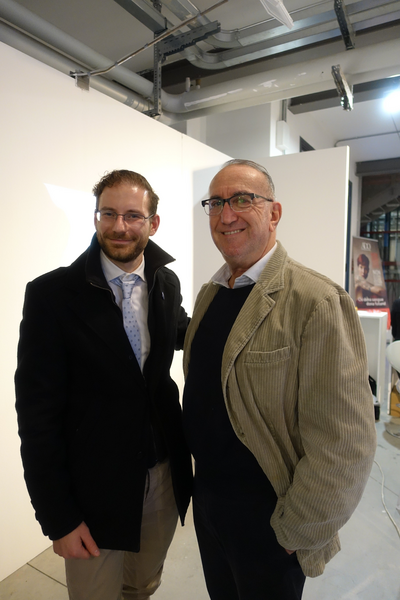
Which Italian artists should we observe from an international perspective?
There are many interesting artists in the field of traditional sculpture. One of them is Antonella Zazzera, who works very well. Then there is Eduard Habicher and Ulrich Egger and all of Val Gardena's sculptors, like the Moroder family. There is also another artist who works well in terracotta: his name is Nando Crippa, a very particular character, he created his own universe, which is a bit claustrophobic, but interesting.
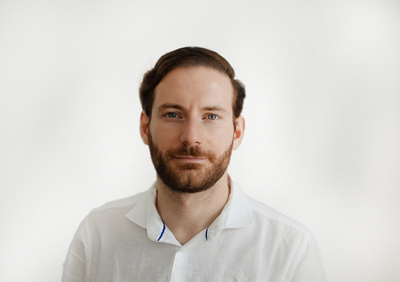
Author: Nicola Valentini
Nicola Valentini is an art historian specializing in contemporary sculpture and new technologies. He regularly explores the art scene in Italy and shares his experiences with us.
Un viaggio attraverso i luoghi della scultura italiana: intervista con il curatore Valerio Dehò
Continuiamo l’approfondimento su Milano Scultura e lo scenario della scultura in Italia con un’intervista a Valerio Dehò, curatore ed ideatore di Milano Scultura.
Valerio Dehò è Professore di Estetica All’Accademia di Bologna. Nel corso della sua carriera ha insegnato presso le accademie di Ravenna e Rimini, Sassari, Carrara. È stato Commissario della Quadriennale di Roma nel 2005, Direttore artistico alla Kunsthaus di Merano dal 2001 al 2015, giornalista per numerose riviste italiane e internazionali, è curatore di mostre in Italia e in Europa. Ha ideato Milano Scultura, giunta oggi alla quarta edizione.
Nicola Valentini: sculpture network si è data la missione di create una piattaforma di connessione tra appassionati e operatori del mondo della scultura, in Europa e nel mondo. Trovare delle organizzazioni che decidono di rischiare investendo nella nicchia della scultura, un piccolo universo che presenta caratteristiche precise e complessità uniche, non è cosa da tutti i giorni.
Valerio Dehò: È molto amata, la scultura, ma il mercato in Italia ha sofferto molto per mancanza di grandi commissioni pubbliche, mentre nel mondo tedesco o francese c’è ancora oggi una grande richiesta da parte di comuni e provincie.
Con Milano Scultura l’idea era di trasformare una fiera generica, Step Art Fair, in una fiera specializzata che si potesse differenziare dalla quantità di fiere che vengono prodotte con sempre maggiore frequenza. Per scultura intendiamo ovviamente anche le installazioni, ricordando che la scultura ha sfiorato l’architettura, il design: tale capacità di connettere ricerche e linguaggi molto differenti e rende la scultura di oggi qualcosa di realmente interessante.
Quali sono a tuo avviso i piú importanti centri di interesse in Italia per appassionati, collezionisti e artisti in cerca di confronto e stimoli?
Abbiamo anzitutto dei parchi di scultura importanti, ma gli artisti tendono a concentrare i loro studi dove la materia prima abbonda, dove si trovano i laboratori. Ogni scultore ha bisogno di un laboratorio. Anche se ci sono delle eccezioni: abbiamo un giovanissimo scultore italiano che si chiama Fabio Viale che studiava a Carrara. Lo ho contattato dieci anni fa perché era l’unico che mi pareva fosse capace di mettere insieme cose diverse, riuscendo a fare qualcosa di nuovo nella scultura in marmo, che è quanto di più tradizionale ci sia. Ha avuto l’idea di portare in arte il tatuaggio: può sembrare banale, ma significa riunire insieme cultura e immagini popolari, cioè il mondo basso, quello del tatuaggio, e un’arte nobile, alta come la scultura. Viale lavora lontano dai luoghi tradizionali della scultura: a Torino si faceva portare i blocchi in marmo da Carrara al nord, è uno in gamba.
Continuando a parlare di luoghi della scultura, mi risulta che tu abbia lavorato molto in Sudtirolo.
Ho fatto la mostra di Tony Cragg nel 2011 a Merano [ndr. Curata da John Wood e Silvio Fuso insieme a Valerio Dehò], dopo che era stata inaugurata l’anno precedente a Ca Pesaro. Devo dire, purtroppo, che i sudtirolesi hanno perso un’occasione in quanto avevamo avuto la possibilità di acquisire delle sue opere ad una cifra ridicola: 80.000 euro per una scultura che di sola fusione ne costava 40.000. I sudtirolesi però sono molto protezionisti, fa parte della loro cultura e non hanno accettato.
Il passaggio dei gardenesi da artigiani ad artisti è stato una svolta epocale per tutti questi artisti di cultura ladina come i Demetz o i Senoner. Posso dire con orgoglio di averli sdoganati, nei confronti del mondo tedesco. Non avete idea di quanti rancori e chiusure ci fossero nei confronti dei ladini e della scultura in legno, non erano considerati artisti ma solo capaci di fare madonne. Invece è nata una generazione di artisti interessanti, grazie al successo della generazione degli anni Sessanta: Ulrich Egger e Walter Moroder sono i più vecchi [ndr. Nati nel 1959 e 1963]. Poi ci sono i nati intorno al 1970, tra cui i Demetz. Hanno tutti fatto la scuola a St. Ulrich [nome tedesco per Ortisei, in ladino Urtijëi]. In quell’area c’è un’unica scuola d’arte, e c’è gente che per imparare la scultura in legno viene addirittura dal Nordovest d’Italia.
Non esiste un’accademia in tutto il Trentino-Alto Adige. Gli aspiranti artisti vanno a Monaco, a Vienna o in altre accademie italiane come Bologna o Firenze, che per la scultura continuano ad esercitare un forte fascino per la loro tradizione classica.
In Sudtirolo c’è un’unica galleria, che però non è mai venuta a Milano Scultura, la Galleria Doris Ghetta che organizza molte mostre importanti tra cui la Biennale Gherdëina.
Mi stupisce il fatto che poche zone d’Italia siano rappresentate a Milano Scultura. È un dispiacere pensare che non si riesca a rappresentare tutto il territorio.
Non è semplice mettere in rete, e il trasporto è un vero problema, ci sono costi enormi. Anche quando si organizzano mostre, molto spesso tre quarti del budget va via in trasporti e assicurazioni.
Continuando con i luoghi italiani interessanti per gli amanti della scultura, oltre a Carrara e alla Val Gardena, bisogna parlare anche di Matera dove oltre al Museo della scultura contemporanea troviamo uno scultore che si chiama Antonio Paradiso che ha comprato una casa e ci ha fatto un centro per la scultura, il Parco Scultura La Palomba.
A Bologna abbiamo Davide Rivalta, un ottimo docente di scultura che sta muovendo qualcosa. Se parliamo di Emilia Romagna, si deve parlare di terracotta o ceramica e quindi a Bertozzi e Casoni. Se devi rappresentare all’estero l’immaginazione italiana, mostragli loro, che tra l’altro hanno recuperato una tecnica settecentesca.
Un’altra tappa fondamentale per il nostro Grand Tour immaginario nella scultura italiana è il sud. Cosa mi puoi dire del meridione oltre a Matera? Sento parlare bene del Museo Donnaregina di Napoli, grazie al suo Direttore. Da alcuni è considerato il miglior museo di arte contemporanea del momento. Come collegare le zone più remote al network della scultura?
Il sud ha un problema fondamentale che è il mercato. Le grandi gallerie sono solo quelle due e tre napoletane, ed una a Palermo, per il resto non c’è niente. Le poche che c’erano al di fuori si sono trasferite a Roma. A Bari c’è la più grossa raccolta di pop art in Italia ma è un caso isolato.
Secondo te cosa si può fare per migliorare la condizione della scultura in Italia? Quale può essere una strategia?
Un aspetto interessante è la nascita di premi, per contrastare la mancanza di committenze pubbliche. Abbiamo pochi concorsi e fatti male, una legge del 1949 che prevedeva l’obbligo del 2% di “abbellimenti artistici” per tutta l’edilizia pubblica di nuova realizzazione che non funziona. Fare scultura a certi livelli costa, ho amici che sono passati dalla scultura all’arte digitale che è molto più economica. Servono incentivi, le accademie dovrebbero chiamare visiting professor, come Stephan Balkenhol che ha sdoganato la scultura in legno ed in Italia è ancora sconosciuto. Serve anche ripristinare cose che già c’erano come per esempio la Biennale di Carrara interrotta nel 2010.
Quali sono gli artisti italiani che dovremmo seguire da una prospettiva internazionale?
Ci sono molti artisti interessanti sul versante della scultura tradizionale: un’artista è Antonella Zazzera che lavora molto bene. Poi, Eduard Habicher e Ulrich Egger e tutta la scultura gardenese come quella dei Moroder. C’è anche un altro artista che lavora bene in terracotta: si chiama Nando Crippa, un personaggio molto particolare, ha creato un suo universo, un po’ claustrofobico ma interessante.
Autore: Nicola Valentini
Nicola Valentini è uno storico dell'arte e si è specializzato in scultura contemporanea e nuove tecnologie. Esplora regolarmente la scena artistica italiana per noi.
